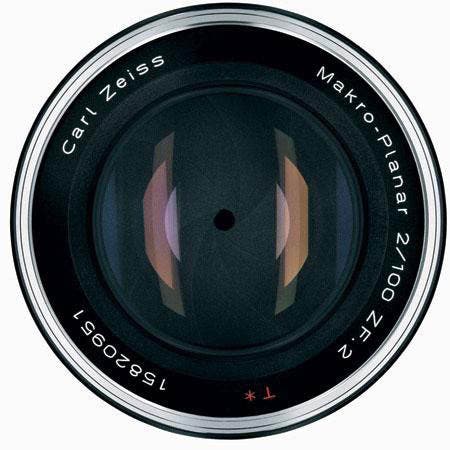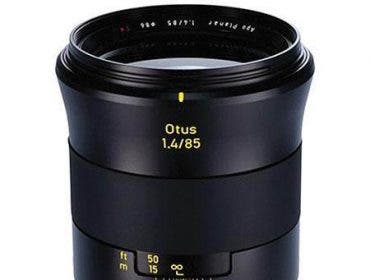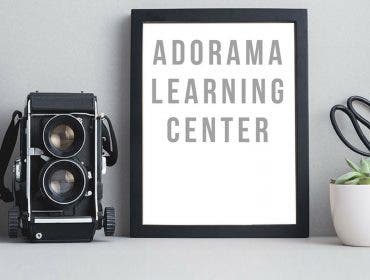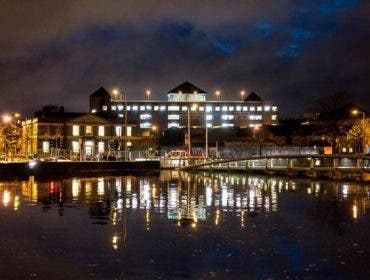All images by Dawn M. Wayand unless otherwise noted.
I had always heard great things in the past about Zeiss with regard to other optic materials they produced, such as the glass for the microscopes I used in school growing up, binoculars I used for the occasional bad seats I managed to get at concerts and the eyeglasses that I wore and continue to wear daily.

Image courtesy of the Adorama website.
While I have been privileged to have had the chance to use a few Zeiss camera lenses in the last few months and being that they cost a pretty penny, I still wanted to try out just one more Zeiss lens before making a final decision on the quality and useability of Zeiss lenses for my needs. Will a Zeiss lens make it onto my holiday wish list this year? Let’s take a look at what it offers and what it doesn’t.

ISO 800. Shot with a Zeiss 85mm at f/2.8 at 1/125 of a sec.
For this test, I rented a Zeiss 100mm F/2 MAKRO Planar T* ZE Manual Focus Macro Lens (as well at the Nikon version) and tested them on a Canon 7D Mark II and Nikon D7100, respectively. The lens is available for rent for $38/day for Canon or Nikon mounts or purchase for Canon or Nikon mounts for $1,543 at Adorama. For purposes of this review and unless otherwise noted, I will share my images and thoughts on the Canon version of this lens.

Image courtesy of the Adorama website.
Compatibility
Zeiss manufactures the Zeiss 100mm F/2 MAKRO Planar T* ZE Lens for Canon (EF mount – the ZE model) and for Nikon (F mount – the ZF.2 model). While they originally also made these for the Pentax K mounts, they no longer manufacture them, however, you might still find the Pentax version for sale in second-hand shops. Most Canon and Nikon Camera models support all functions of this lens – with the exception of a few of which only certain functions are supported. It’s always a good practice to check with your Adorama representative for what lenses work with your exact camera model.

ISO 800. Shot with a Zeiss 85mm at f/2.8 at 1/125 of a sec.
This Zeiss will work on both full frame and 1.5x crop sensor camera bodies, but will provide the equivalent of a 150mm focal length on the latter – perfect for landscape photography, while still in an acceptable range for portraiture. While this is called a “macro” lens, it only renders a magnification of 1:2 and not 1:1, but it still makes for an excellent choice of a close-up photography lens.
Look and Feel
There is something to be said about the density of a lens being a good indicator of something that is durable and built to last. This lens feels like a rock, weighing in at 680g (24 oz or 1.5 lbs), with a length of 115mm (4.5 inches) and a diameter of 76mm (3 inches). There’s a good reason for this density – it’s made completely of metal and glass! That’s right, no plastic here. (Exception: the flimsy, poorly-made front cap which should be replaced by a Nikon or Canon cap immediately…)

As you can see, this is a good size lens – just imagine the weight!
ISO 800. Shot with a Zeiss 85mm at f/2.8 at 1/125 of a sec.
So…let’s get this out of the way first: this lens – like all other Zeiss lenses – is manual focus only. But wait! Don’t run away! This lens, once you get past that learning curve of manual focus, is capable of making some jaw-dropping, cinematic-quality, tack-sharp images. That’s right. But I will talk about that in more detail later. Right now, it’s good to know that by using manual focus over autofocus, YOU have 100% control over exact the part of your subject that you want the most focus on instead of your camera making that almost always incorrect assumption for you! (Either that or you are pointing your camera in ten directions before actually setting your focus and clicking the shutter…)
I would strongly recommend using a tripod when using this lens because of its heavy weight otherwise you will have a lot of blurry images from handholding. I learned this the hard way! I got the focus beeps. Check. It looked fine on my LCD screen. Check. But it wasn’t until I got the images up onto a computer screen at home that I found many images I had taken without a tripod to be blurry. Strike!
The Zeiss 100mm F/2 MAKRO Planar T* ZE Lens has a long focus throw, which provides you with more opportunity to fine tune your accuracy when focusing. If you have issues with obtaining proper focus, a focusing screen might be in order for you. You can find focusing screens at Adorama at varied prices based on your camera model. Be sure to ask your Adorama technician on exactly which screen you need before buying and be sure to have a qualified technician install this for you as it is easy to damage when installing and the screen is a bit of a pricey piece to end up installing it directly into the trashcan instead.

Canon Eh-A Standard Precision Matte Focusing Screen for EOS 7D Mark II DSLR Camera
Image Courtesy of Adorama Website
Like other Zeiss lenses, this Zeiss has bright bold engraved and painted markings on the barrel and focus ring instead of painted markings on polycarbonate found on other modern lenses, which eventually rub off after extended use. The markings note an aperture range of 2.0 to 22. The lens also shows an distance scale – which you rarely find on modern lenses nowadays – as well as a depth of field scale.
The focus ring is well-damped, which I find lacking on so many lenses. There is no need to readjust your last focus for the same next shot after tilting the camera down to look at your LCD screen from the previous shot anymore. There is no lock, nor is it needed. Another “plus” to note: the front element does not move during focusing, so this lens functions perfectly with CPL filters. This Zeiss accepts 67mm size filters.
Image Quality
It is important to know one thing: once you get past the manual focus learning curve, and you know how to use the lens, the Zeiss 100mm F/2 MAKRO Planar T* ZE Lens will produce amazingly tack-sharp, cinematic-quality images for you – better than almost anything in your current camera bag.
Color and Contrast
I was blown away to find that the colors that I recorded with the Zeiss lens were exactly the colors I saw. Color renditioning is excellent. There is lower contrast at wider apertures, but this improves when stopped down.

Dreamy cinematic capture at Storm King Art Center.
ISO 100. Shot at f/4.0 at 1/200 of a sec.
While a bit dreamy and soft in sharpness, I was most pleased by the color rendering of skin tones and contrast in my portraits, even close to wide open as shown in the image below, taken at f/2.8.

Out of the camera, these are the actual colors and clarity produced with this lens. The only retouching I did to
this image of Valery was a small crop on the right and the addition of my watermark.
ISO 200. Shot at f/2.5 at 1/50 of a sec.
Bokeh
Like most of the Zeiss primes wide open, the Bokeh produced with this lens is magnificent, which I attempted to exhibit using my the grain of my wood table as a marker. With 9 rounded blades, I was surprised to see that the bokeh was more of an oval (or almond or eye) shape rather than a perfect circle, which can be seen more clearly in the first image below due to some also surprising – vignetting.

The only thing in focus at this point is the number “32”.
ISO 800. Shot at f/2.0 at 1/320 of a sec.
As I stop down to f/2.8, the vignetting improves, making the eye-shaped bokeh become less apparent.

The area of bokeh lessens as the top of the silver key and the ring comes into focus, as does a good part of the table.
ISO 800. Shot at f/2.8 at 1/250 of a sec.

By f/4.0, the image is almost completely sharp as the eye of sharpness grows larger around the keychain.
The bokeh is still pleasing at f/4.0.
ISO 800. Shot at f/4.0 at 1/125 of a sec.
Even at f/5.6, the corners of the image are still soft while the subject is completely in focus now.

The corners are still soft, but the keys are totally sharp now. Has a neat-3D-like quality to it, doesn’t it?
ISO 800. Shot at f/5.6 at 1/60 of a sec.
In the image below, the background is still creamy even at f/7.1, lending to my subject leaping right out of the image.

It’s almost as if he is standing in front of a faux background, but alas!
My model, Matt, and I are shooting outdoors on a beautiful Fall day.
ISO 640. Shot at f/7.1 at 1/400 of a sec.
The bokeh quality of this lens creates a perfect separation between my subject and the background as exhibited in the image below.

This captures just about every detail of Lisette down to her hair strands,
but the unflattering background behind her is completely out of focus.
ISO 640. Shot at f/5.6 at 1/100 of a sec.
Sharpness
I’m sorry to say folks, but due to the weight of this lens, true sharpness can really only be achieved by using a tripod or having an insanely steady hand. Unfortunately, I believe we all have a little bit of shake when holding something of weight steady for a period of time like you would while taking the time to dial in your focus on this lens. However, the small inconvenience of a tripod can lead to the great reward of a jaw-dropping, tack sharp image that will make you want to give up autofocus, sell all of your lenses and buy Zeiss.
In the series below, the image got sharper as I stopped down with the notable difference for me being right at f/5.6.

It’s sharp here with pretty bokeh, but it doesn’t quite stand out for me yet.
ISO 800. Shot at f/2.0 at 1/250 of a sec.

This is acceptable sharpness for me while achieving beautiful bokeh.
ISO 800. Shot at f/2.8 at 1/125 of a sec.

I feel like I can pick the corks up off the table now…
ISO 800. Shot at f/5.6 at 1/30 of a sec.
The next image shows the sharpness in an uncontrolled environment – also a good example of the crispness you’ll get with this “macro” lens.

Midday light aside, I was a little over a meter above this and captured leaf veins, dirt particles and all!
ISO 100. Shot at f/7.1 at 1/400 of a sec.
Chromatic Aberrations
Like many lenses in this class, this Zeiss suffers from fringing when shot wide open with hard contrast areas. When stopped down, this improves – almost, if not, completely resolves by f/4.0.
Flare
I spent a great deal of the day outdoors midday with this lens and found no instance of flare. Not only was the lens hood a big help with that, but the fact that the interior of that lens hood is coated with a non-reflective material – similar to the feeling of felt – to aid in preventing lens flare.
Distortion
As I anticipated, I found no instances of distortion with this lens.

No distortion here – just a soft, beautiful face.
ISO 640. Shot at f/5.6 at 1/100 of a sec.
Vignetting
As shown and mentioned in the first key chain image above under Bokeh, a slight bit of vignetting is noticeable wide open but goes away when stopped down. Vignetting is completely gone after f/4.0.
Who It’s For and Recommended Uses
Considering the detail and texture this lens is capable of capturing, it obviously works well for close-up work – no question. The color rendering is immaculate making this a suitable lens for landscape photography, product photography and portraiture.

Excellent focal length and lens quality for landscape photography.
ISO 100. Shot at f/5.6 at 1/250 of a sec.
The fact that this is a fast prime allows it to work well in low-lighting scenarios. Provided you have the distance between your lens and your subject and having had nothing but this on my camera for a whole day, I found it to be a good all-around lens capturing everything from details to the whole scene.

Captured great detail close to wide open on my model, Bryan,
while leaving some areas perfectly and acceptably out of focus.
ISO 200. Shot f/2.8 at 1/50 of a sec.
Due to the focus throw being long and time is needed for precise focusing, I wouldn’t recommend this lens for action or sports photography unless you are on a tripod and following the same subject that remains at the same distance from your lens.
Included and Optional Accessories
Included:
Zeiss 100mm F/2 MAKRO Planar T* ZE Lens

Lens Shade
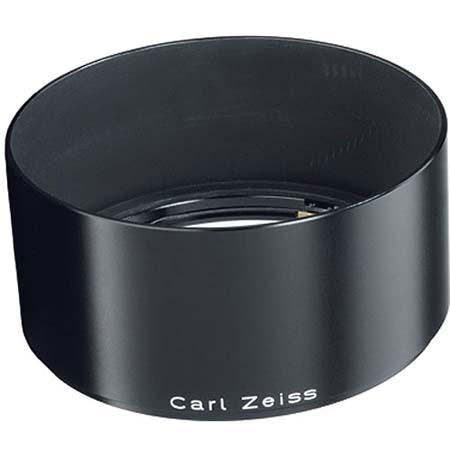
Recommended:

A focusing screen

A good tripod or monopod


Conclusion and Recommendation
I must say that out of all of the lenses – both manual and autofocus – that I have owned, rented and/or tested thus far, I have never had such the love/hate relationship that I have with this lens. While I only get a 1:2 magnification ratio for macro, I have to use a tripod for useable images due to the weight of the lens and the images are a little soft with vignetting wide open (my “hates”); I “love” the color rendering, the unbeatable 3D-inducing bokeh and the unmatched clarity that I get from this lens over any other lens that I’ve experienced. I guess it is the characteristic Zeiss quality really. Sacrifice a little and get a ton back – and then some. I do know that if I were to purchase a Zeiss lens, that it would probably last me a lifetime and a decade or two down the road, I would still be able to get a pretty penny back for the lens if I decided to upgrade to a newer model. Yes, I’d buy the Zeiss 100mm F/2 MAKRO Planar T* ZE Lens for its versatility and for all of the reasons I “love” the lens. If you are looking for a good investment in a lens backed by quality that has been linked to something as precious as what you wear on your face regularly in order to see, if you can be patient enough to get past the manual focus curve and if you don’t shoot fast action subjects, you might “love” this lens too.
